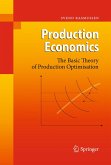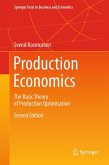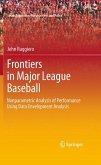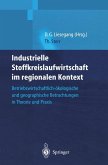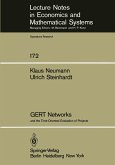A production economist focuses on assessment, and will use an aggregate description of technology to answer such questions as: How does the firm compare to its competitors? Has the firm improved its production capabilities? A production engineer focuses on optimizing resources, and will use a detailed description of technology to answer a completely different set of questions: Which operations or plants should produce which products at what time? Should resource capacity be expanded and, if so, which resources should be acquired? Each group could benefit from the other group's perspective. This book offers a unified, integrated point of view that bridges the gap between these two historically distinct perspectives.
Dieser Download kann aus rechtlichen Gründen nur mit Rechnungsadresse in A, B, BG, CY, CZ, D, DK, EW, E, FIN, F, GR, HR, H, IRL, I, LT, L, LR, M, NL, PL, P, R, S, SLO, SK ausgeliefert werden.



